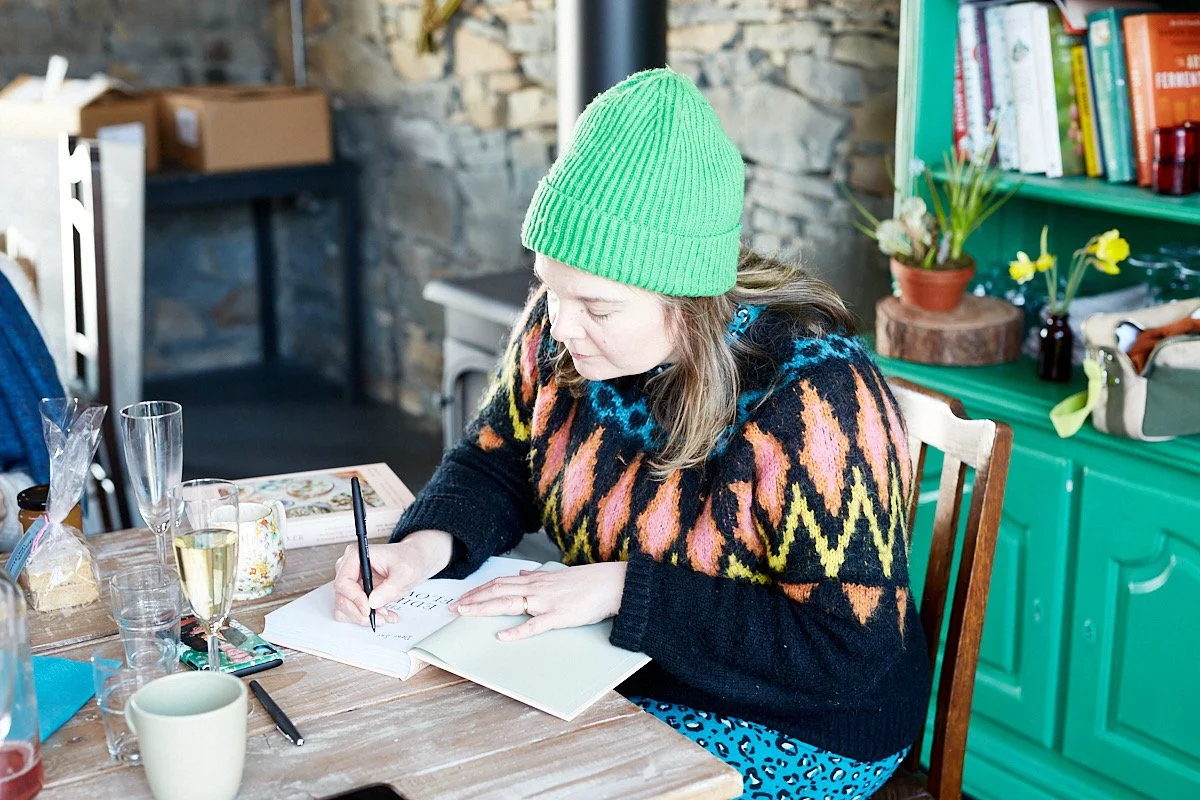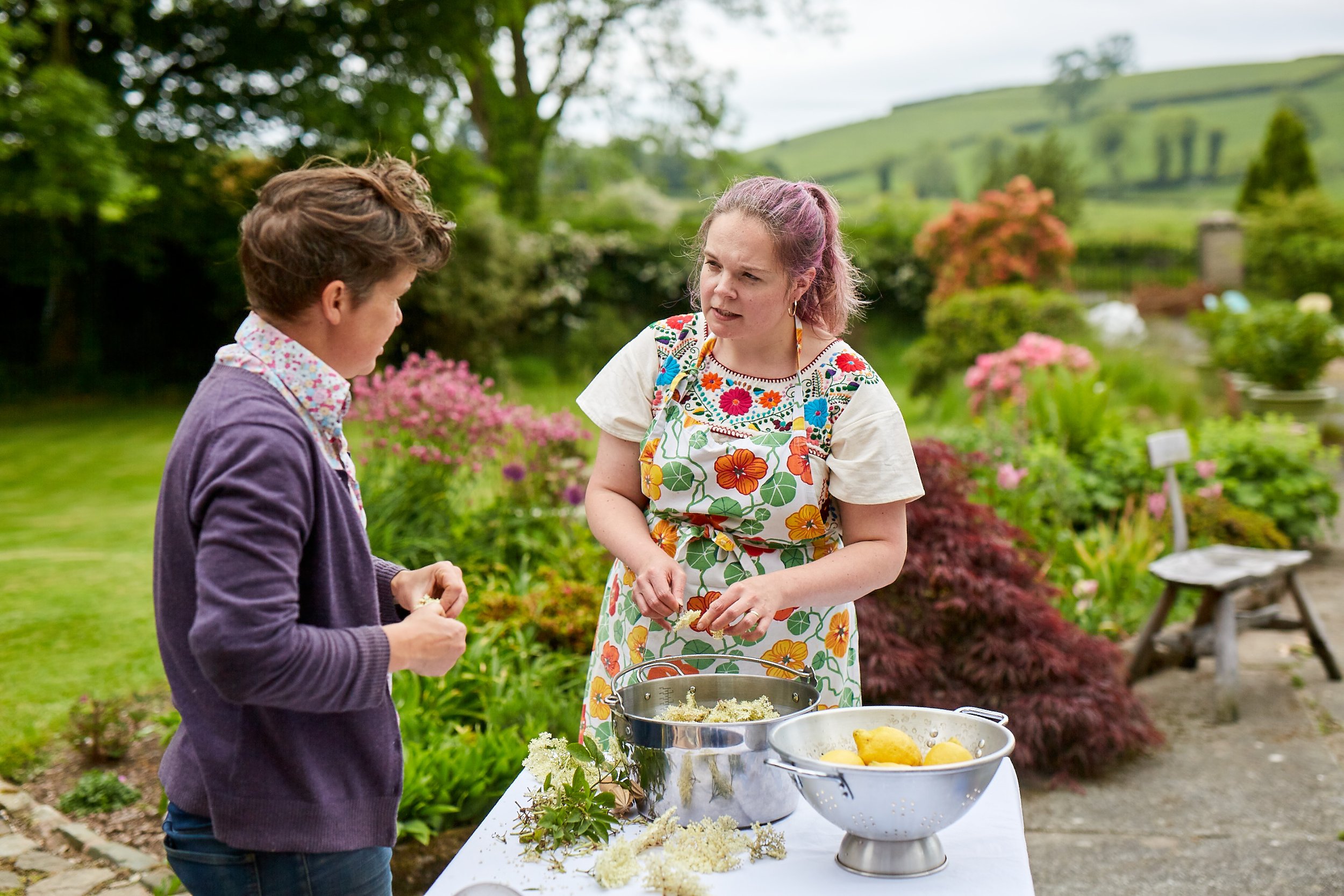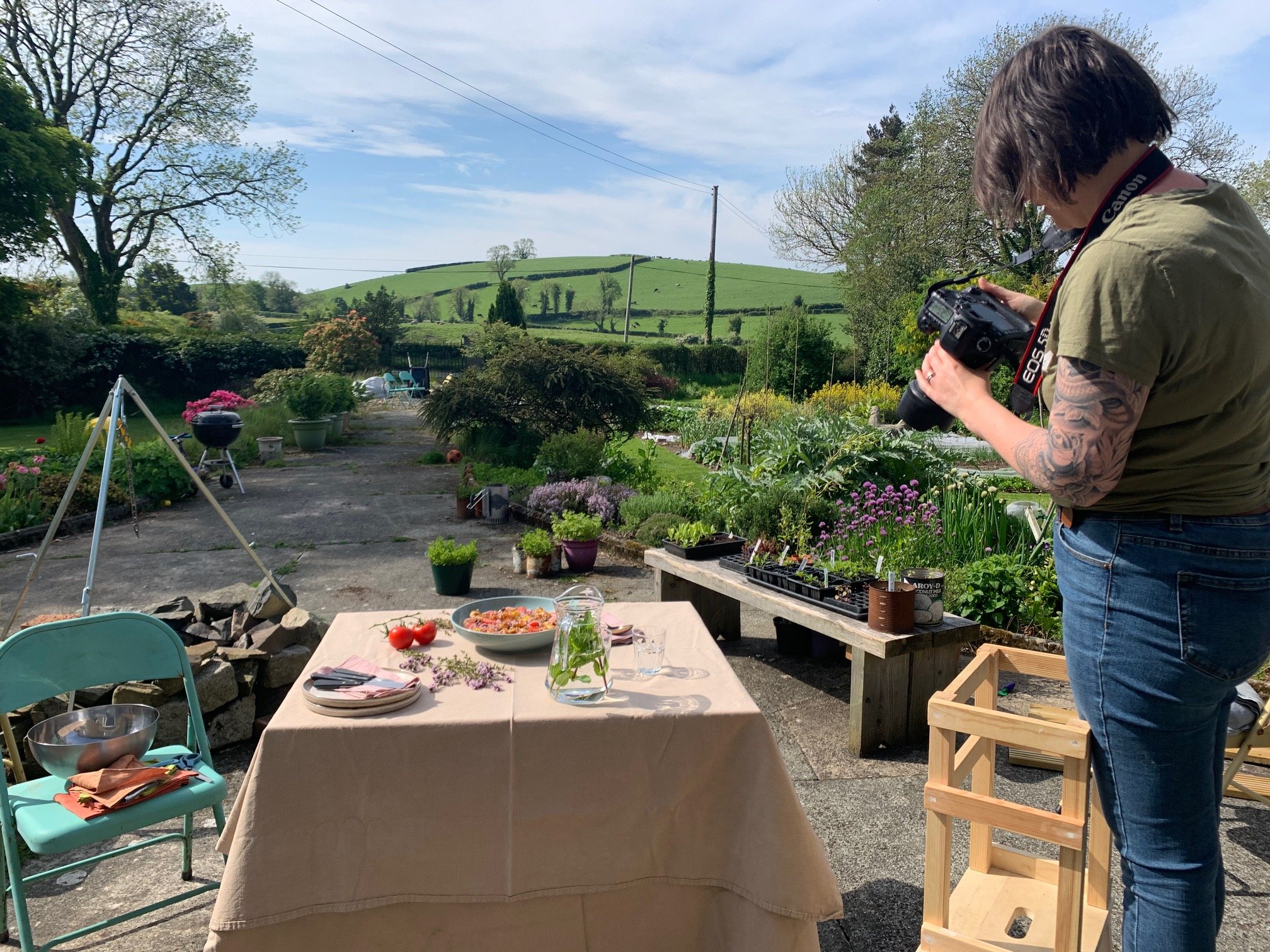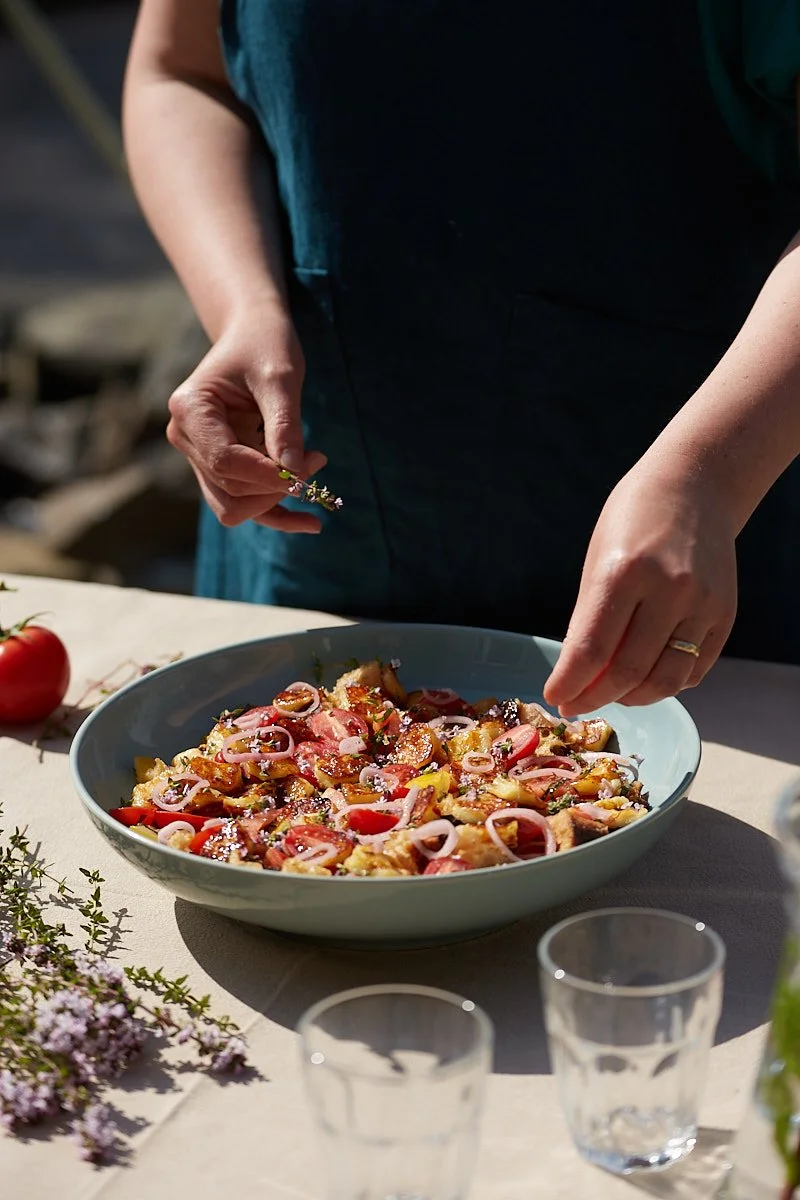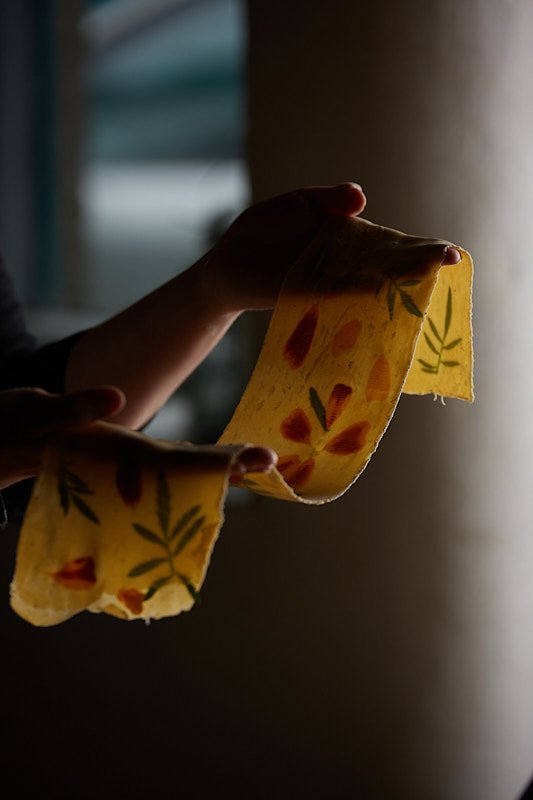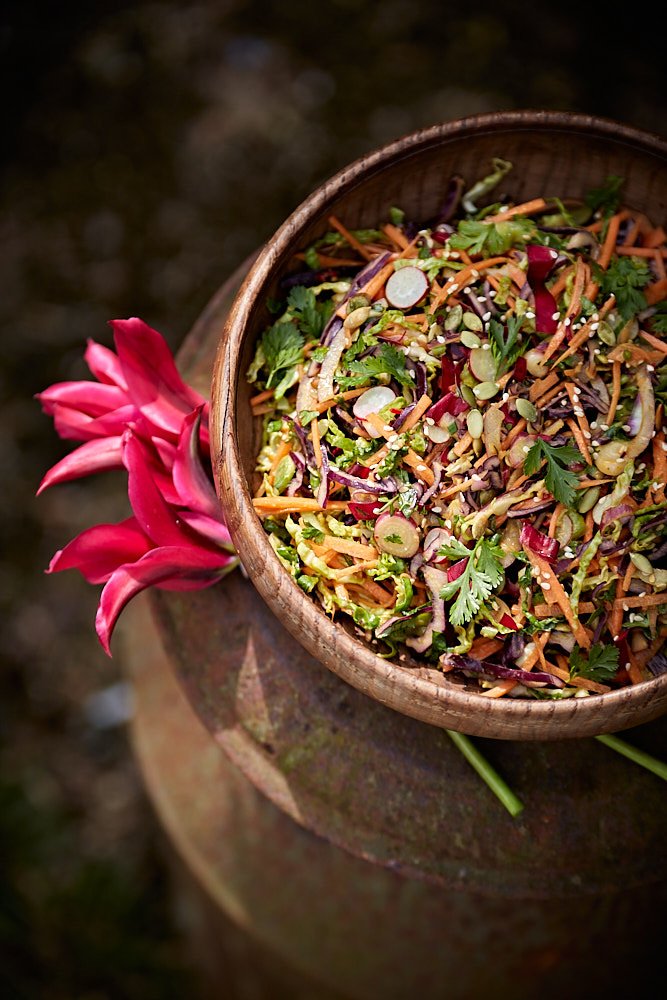The story of writing a book
In March 2023 we published our first book - The Edible Flower: A modern guide to growing, cooking and eating edible flowers. And in all the conversations around the book coming out I realised people were fascinated with the process of how you get the opportunity to write a book. So I’ve written this piece explaining our book-writing journey.
I’m sure other authors have completely different experiences, but this is ours and I hope that by sharing it we can demystify the process a bit and perhaps inspire a few people too. As always, I’d love to hear your thoughts and questions.
When I was a little girl, I used to listen for my parents coming down the hall when I was up too late reading, and I would flick off my bedside light. My dad got wise to that ploy, and used to feel the lightbulb to see if it was still warm, so I was always discovered! I don’t think they really minded. I dreamed I’d write a book – there was something magical about how you could live in a rather mundane village in rural Northern Ireland in the 1980s, but once you were between the covers of a book you could be anywhere! Floating in the solar system or clambering up a magical, faraway tree! I wanted to create a little bit of that magic.
When we started The Edible Flower, we wrote a few high-level, long-term goals. The kind of things we would like to happen in our most ambitious dreams. For me, one was to feed Yotam Ottolenghi – and by a happy series of chance we had the absolute joy of doing that at a supper club back in 2017. I still have slightly panicky thoughts about how I wasn’t happy with the dessert I made that evening!
Another goal was to write a book. We wanted to share our journey, our recipes, and our love of growing food! For a long time that goal was firmly parked. We were growing the business, having twins, and generally pivoting our work and energy on a daily basis. The space and time to write a book seemed very far down the to-do list.
But in June 2020 – mid the lockdowns – our amazing friend Sharon Cosgrove (food photographer extraordinaire) approached us and said she wanted to photograph a cookbook. And maybe we’d like to write one. A collaboration! And it suddenly felt like the right time. The lockdowns meant our work had shifted a lot – we were working from home more, salad-picking, cake-making and running smaller outside events. There was a bit more space in our lives. Not a lot, but a bit more.
We brainstormed ideas and potential publishers. We spoke to our friend Naomi, who used to be a literary agent, for advice on agents and approaching publishers. And our wonderful friend Olia Hercules shared her cookbook proposals to give us an idea of what we needed to write to get a publisher interested. We did a couple of photoshoots with Sharon, so we had some perfect photos for our proposal.
And then, while all this behind-the-scenes work was happening, an editor at Laurence King approached us. She thought a book on growing and cooking with edible flowers would sell well. It was peak lockdown gardening and cooking frenzy! The editor had found us through the power of the internet. It was slightly unbelievable, and I think we all felt a bit sceptical that this was a genuine opportunity.
We met (online of course) with the publisher, discussed her ideas for the book and then she asked us to write a proposal to submit to her commissioning board. A book proposal can come in different forms, but it’s basically a synopsis of the book you plan to write and who the target market is. It includes an outline of the chapters, some sample material (we included recipes and photographs) and an assessment of where the book fits in the market – competitors, the book’s USP and information on your own channels for marketing and selling the book. Publishers are very interested in your social media presence and your other marketing platforms.
We put together a proposal in about 36 hours – this would have been much more difficult if we hadn’t already been thinking about writing a cooking and growing book. We had ideas, sample recipes and some beautiful photographs that sold our vision for the book. The proposal was submitted and, miraculously, accepted.
And then, after the excitement, the long process of negotiating the book deal began! And I will say it here that probably, unless you are very famous or have a gigantic social media following, you will not be paid anything even close to a minimum wage salary as an advance for writing your first book! You will be doing it for the love, not for the money. What was really helpful was getting an agent to represent us – yes, we pay her a percentage of our earnings, but it was 100% worth it! She negotiated up our advance, she argued for a fee to cover some of the costs of cooking and styling the photos for the book and she spent endless hours negotiating the nitty gritty of royalties and foreign rights and a million other things we didn’t want, or need, to know!
While all these discussions were going on we got on with writing the book. We had a deadline to submit the first full draft on 31 August 2021 and we started writing in earnest in January 2021. We hadn’t signed a contract at this point – that wasn’t signed until after the book submission deadline in mid-September 2021. Apparently that is common, so we ploughed on regardless!
One of the big challenges for our book was that we needed to grow the flowers, write the content, test the recipes and at the same time do all the photographs. There is a short window when specific flowers are at their peak and looking gorgeous and we had to schedule the photoshoots for both the plants and the recipes within that period. We needed to photograph magnolias in March, lilacs and hawthorn in May, elderflowers in June and dahlias in August. It was intense, especially since none of us had styled or photographed a cookbook before. As it was mid-virus-lockdowns, and because we were in Northern Ireland we did it all ourselves. Normally when you write a cookbook the author writes the book, submits it and then a team comes together – a photographer, the author, a food stylist and sometimes an art director – and spends a couple of weeks cooking, styling and then photographing all the photos for the book. It was also that super-hot summer of many heatwaves! There were many, many sweaty days desperately trying to photograph food and flowers before they wilted or dissolved in a puddle. Now we have the book in print I’m so proud of the photographs we created with Sharon – they are beautiful, useful and capture our lives and work. And it was fun too! A dream to be able to spend time doing something so creative and rewarding.
After we eventually signed our contract in September 2021 we handed in our first draft. We had been commissioned to write 30,000 words and we wrote 75,000 - basically two and a half books! Our wonderful publishers made the book a lot bigger so we could include more words and more photographs, but we still had to cut quite a bit of content. There was almost a whole year of editing – first our editor at Laurence King and then a specialist food and gardening editor (who challenged us on facts and techniques and sense-checked everything). And finally, a sub editor who proofread the whole manuscript for errors and spelling mistakes. We also both read it several times too!
Meanwhile, the designers were hard at work, putting together the layout making the book as delightful and user-friendly as possible. We shoe-horned in a couple of extra photo shoots where we were missing certain types of photos and then in July 2022 did a special cover photo-shoot. By that time, we, and the publishers, had a much clearer idea of the book as a whole and what type of image would work for the front cover.
Then the book went off to print and we moved through the publishing machine and got to know a whole new team of people responsible for marketing and PR and book distribution. We realised that we weren’t really finished at all – but in fact just beginning a whole new process of promoting the book.
On 9 March 2023, our book – The Edible Flower: A modern guide to growing, cooking and eating edible flowers was published in the UK. It was released in the U.S. on 14th March and a German edition will be published soon. It’s too early to say if it’s done well, and to be totally honest I’m not exactly sure what we’re aiming for. Jo has created spreadsheet scenarios based on some pretty shaky knowledge of how the publishing industry functions and reckons we might need to sell about 6,000 copies if we were to pay back our advance. And it’s only at the that point we might earn some royalties from the book. But if we sold that many we’d be doing very well indeed. According to one infographic, published in The Times, of the 5,000 cookbooks released in the UK in 2020, only 48 sold more than 5,000 copies.
But for me that wasn’t really the point – of course I’ll be delighted if the book sells well and if we get the opportunity to write another one – but I wanted to create something beautiful and informative that takes people on a journey through the seasons. A book that helps people reconnect to their gardens and to nature through growing and cooking and slowing down to appreciate the flowers. And I hope, in my heart, that’s what comes through for everyone who picks up the book.

